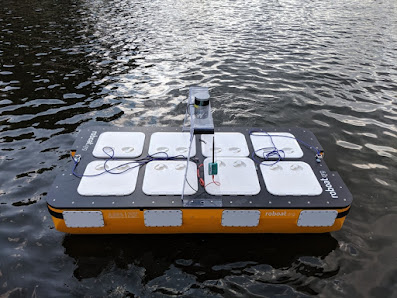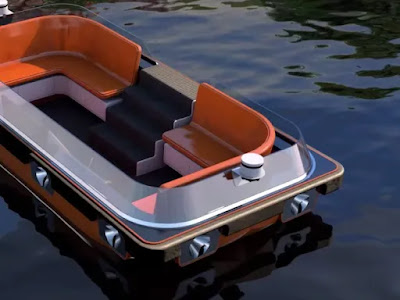- General
- November 29, 2020
- 7 minutes read
Meet MIT’s Self-Driving “Roboat”
Photo: MIT CSAIL The Massachusetts Institute of Technology (MIT) never seems to run out of delivering cool stuff, if not a…
 |
| Photo: MIT CSAIL |
The Massachusetts Institute of Technology (MIT) never seems to run out of delivering cool stuff, if not a back-flipping dog-like robot or using machine learning to identify new drugs or the first direct image of a black hole. Now, we’ve spotted yet another which was unveiled recently and we’ll like to show you, an autonomous boat that’s aptly named “Roboat”.
This October, researchers from MIT’s Computer Science and Artificial Intelligence Laboratory (CSAIL) unveiled an autonomous boat that can ferry itself at sea. In this case, the Roboat is aimed at ferrying humans and not just goods as self-driving boats have already begun doing for some years.
The new Roboat, actually the second make hence its name ‘Roboat II’ is five years in the making and was tested at the canals of the city of Amsterdam for three hours wherein it collected data and returned back to its original location with an error margin of just 0.17 meters, researchers say.
 |
| Photo credit: MIT CSAIL |
The Roboat II, as pictured above, is capable of holding passengers and ferrying them between places. Notice its portability which comes in crucial given that there’s an ultimate plan to make individual units of the boat able to join together to form a larger boat.
The new boat measures 6 feet, whereas MIT researchers speak of it as “Covid-friendly”. It’s being created in partnership with the Amsterdam Institute for Advanced Metropolitan Solutions and is largely still a work in progress.
Over the years, self-driving cars and trucks have drawn the most attention while the use of self-driving technology in other vehicles like boats has gotten lesser attention. It’s not surprising given that cars and trucks represent some of the most common transportation options used by modern humans and are way harder to implement autonomous technology on.
In the sea, there are not many obstacles in the way as it is with cars on the road and makes the implementation of self-driving technology relatively easier in its case. Here, MIT’s Roboat II makes use of a Velodyne lidar sensor that’s similar to the type commonly found in autonomous cars.
The Roboat II builds on a first version of the Roboat and paves the way for an upcoming Roboat III that’s planned to be 13-feet long and carry between four and six passengers.
 |
| Roboat III. Photo credit: MIT CSAIL |
The Roboat II will continue its tests in Amsterdam in a bid to make it more usable and safe. With that and coupled with upcoming work on the next Roboat III, you may soon get the opportunity to be riding long distances in connected self-driving boats which seems cool.







